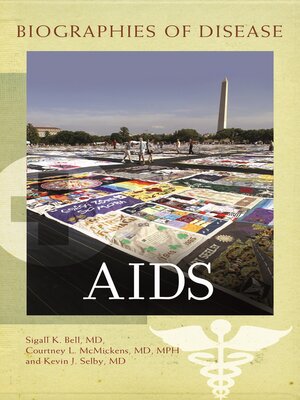
Sign up to save your library
With an OverDrive account, you can save your favorite libraries for at-a-glance information about availability. Find out more about OverDrive accounts.
Find this title in Libby, the library reading app by OverDrive.



Search for a digital library with this title
Title found at these libraries:
| Library Name | Distance |
|---|---|
| Loading... |
This comprehensive review examines the biological, medical, social, historical, and political aspects of HIV/AIDS.
In AIDS, three Harvard-educated physicians explore the evolution of the HIV epidemic, contextualizing the disease from historical, social, and medical perspectives. Addressing the last 25 years, the book examines basic biological principles, including what a virus is, how the human immune system works, and how HIV impairs these functions. It presents an in-depth discussion of the HIV life cycle, explores central issues pertaining to diagnosis and treatment, and sheds light on how the treatment was developed and implemented.
The book also reviews global epidemiology of HIV/AIDS and principles of transmission, as well as what comprises an epidemic and the factors that determine whether an infectious outbreak will propagate or die out. Finally, it looks at where HIV came from; early reactions to the disease and the social stigma it engendered; the cultural impact of HIV-positive role models; and the global economic, population, and political effects of this illness.
In AIDS, three Harvard-educated physicians explore the evolution of the HIV epidemic, contextualizing the disease from historical, social, and medical perspectives. Addressing the last 25 years, the book examines basic biological principles, including what a virus is, how the human immune system works, and how HIV impairs these functions. It presents an in-depth discussion of the HIV life cycle, explores central issues pertaining to diagnosis and treatment, and sheds light on how the treatment was developed and implemented.
The book also reviews global epidemiology of HIV/AIDS and principles of transmission, as well as what comprises an epidemic and the factors that determine whether an infectious outbreak will propagate or die out. Finally, it looks at where HIV came from; early reactions to the disease and the social stigma it engendered; the cultural impact of HIV-positive role models; and the global economic, population, and political effects of this illness.







